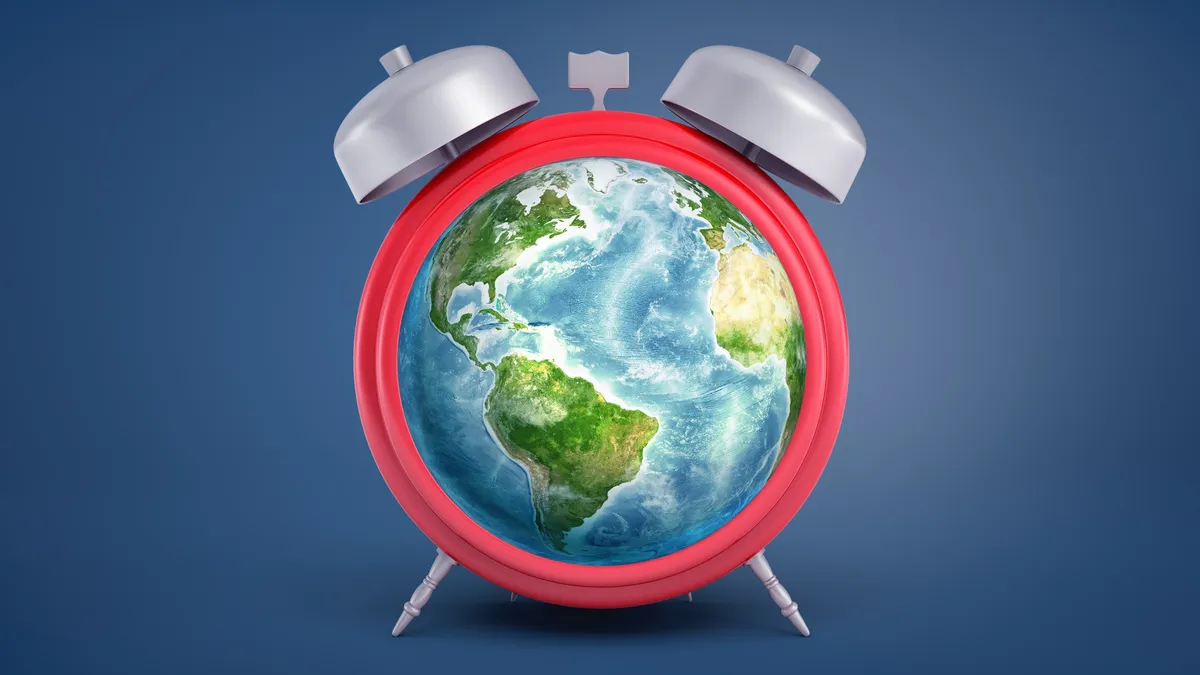
The Earth is currently spinning at such a rapid pace that global timekeepers are contemplating a scenario that has never been executed before: the introduction of a negative leap second. This year has already seen some unusually short days, with July 9 and July 22 recording durations shorter by approximately 1.3 and 1.4 milliseconds, respectively. Furthermore, August 5 is projected to be even shorter, losing around 1.5 milliseconds, as reported by timeanddate.com. This phenomenon follows a noticeable trend that has emerged since 2020, marking a shift to slightly shorter days than observed over the past 50 years.
A typical day on Earth lasts about 86,400 seconds, equating to 24 hours — the time required for our planet to make a complete rotation on its axis. However, the exact duration of this rotation is influenced by several factors, including the gravitational forces exerted by the sun and the moon, as well as Earth's own gravitational field. Notably, on August 5, the moon will be positioned at its furthest point from the equator, which alters its gravitational influence on Earth's rotation, causing it to speed up.
For billions of years, Earth's rotation has been gradually slowing down, primarily due to the moon's slow drift away from our planet. Nevertheless, since 2020, scientists have observed a slight increase in the Earth's spin. Although we are only discussing a matter of milliseconds — an imperceptible change for most people — this acceleration has significant implications for systems reliant on precise timekeeping. Computers, GPS technologies, banking infrastructures, large telescopes, and electricity networks across the globe depend on accurate synchronization, making every millisecond critical.
To maintain global time consistency, these systems are synchronized to a standard known as Coordinated Universal Time (UTC). This time standard is derived from over 400 atomic clocks worldwide, which measure time with astonishing precision down to a billionth of a second (nanoseconds). However, due to the irregularities in Earth's rotation, UTC operates independently of the actual length of a day. Typically, variations in the Earth's rotation balance each other out; however, over time, small discrepancies accumulate. When these differences reach a certain threshold, the International Earth Rotation and Reference Systems Service (IERS) — the organization tasked with maintaining global time standards — intervenes by adding a leap second.
A leap second is similar to a leap year, intended to account for discrepancies between astronomical time, which is based on Earth's rotation, and UTC, which is derived from atomic clocks. Introduced in 1972, leap seconds are added only when necessary. However, advancements in technology have complicated the issue, as leap seconds can disrupt the synchronization of sensitive instrumentation and computer systems. Patrizia Tavella, director of the International Bureau of Weights and Measures (BIPM) time department, has noted that leap seconds often lead to failures in computing systems, particularly in sectors like aviation that rely on precise timekeeping for flight scheduling.
Different computing networks across nations have various methods for incorporating leap seconds, which has led to operational challenges. For instance, airlines have encountered difficulties in timing schedules due to discrepancies caused by leap seconds. In light of these issues, an international consortium of scientists and government agencies voted in 2022 to phase out the leap second by 2035.
With the Earth’s increasing rotation speed, discussions around the necessity of a negative leap second have emerged. A negative leap second would involve removing a second from UTC if astronomical time outpaces atomic time. Judah Levine, a fellow at the National Institute of Standards and Technology (NIST) and a physics professor at the University of Colorado, has expressed concerns about this approach. He argues that the current leap second system has always posed challenges, and implementing a negative leap second would likely exacerbate these issues. The primary concern lies in the fact that this concept has never been executed, and the software required to implement it has yet to be tested.
Darryl Veitch, a professor at the University of Technology specializing in computer networking and clock synchronization, agrees that a negative leap second could be problematic. He points out that even the insertion of positive leap seconds has proven to be challenging, and introducing a negative leap second would carry even greater risks. The complexity of our interconnected networked society continues to grow, increasing the stakes involved in accurate timekeeping.
While the prospects of a negative leap second occurring this year seem slim, the question remains: could it happen in the near future? Current estimates suggest a 30% probability of a negative leap second within the next decade, as noted by Levine. Various factors will influence this outcome, including the potential abolition of leap seconds altogether. Interestingly, while recent years have shown a slight acceleration in Earth's rotation, climate change might eventually contribute to a deceleration due to the redistribution of water caused by melting ice. Veitch cautions that, despite recent fluctuations, the long-term trend indicates that Earth's rotation is on a path to slow down.